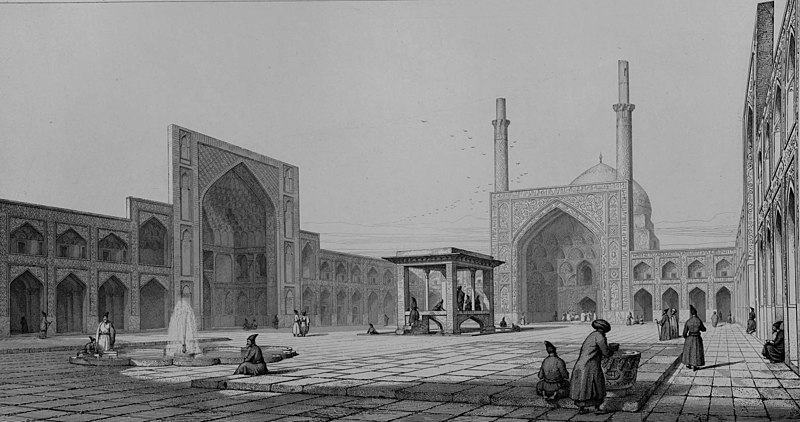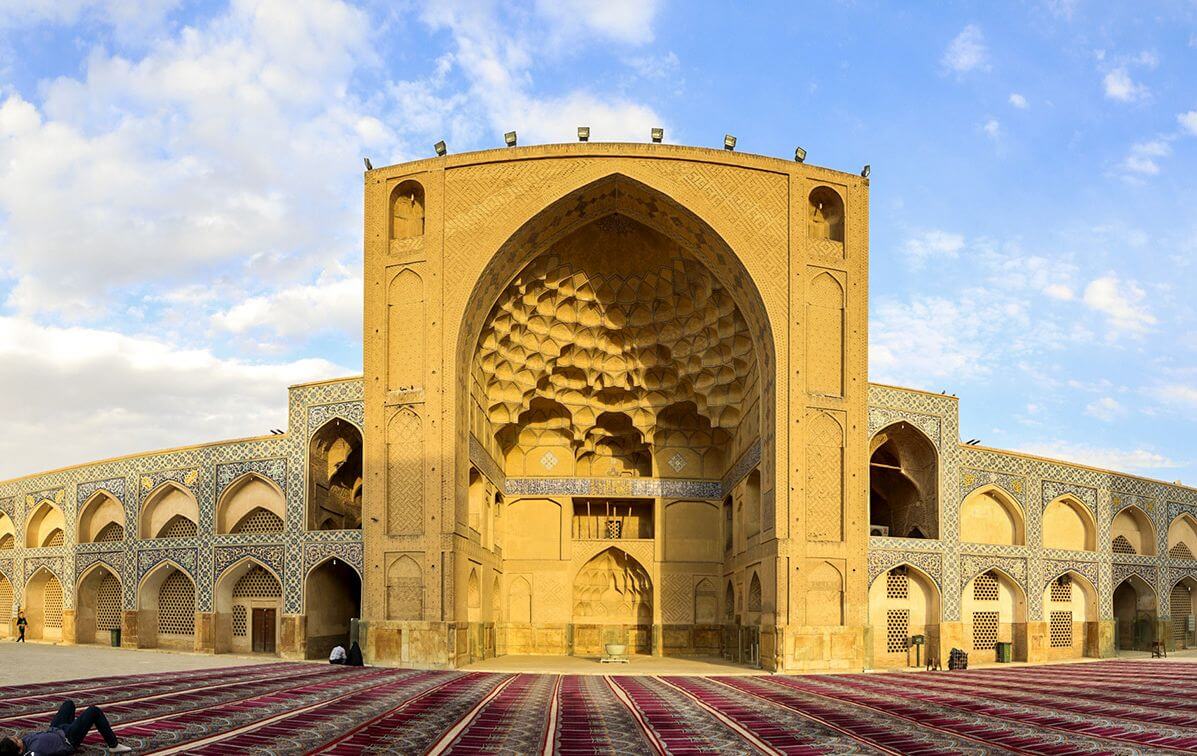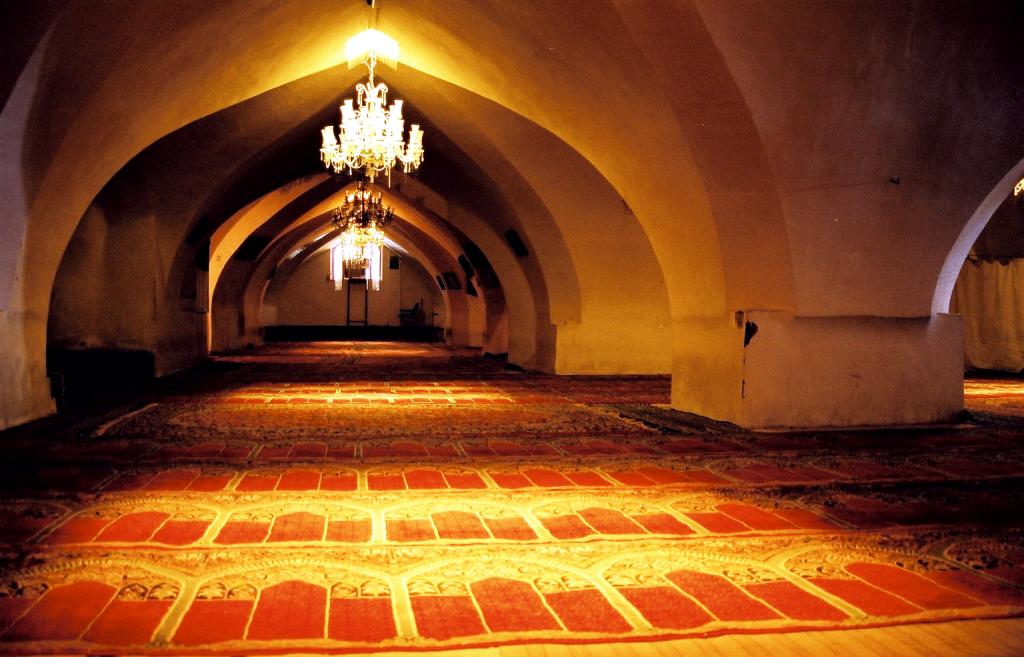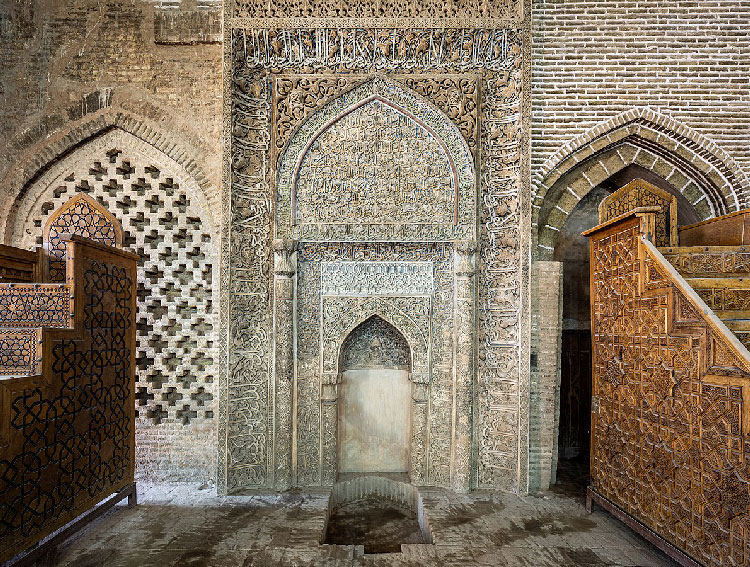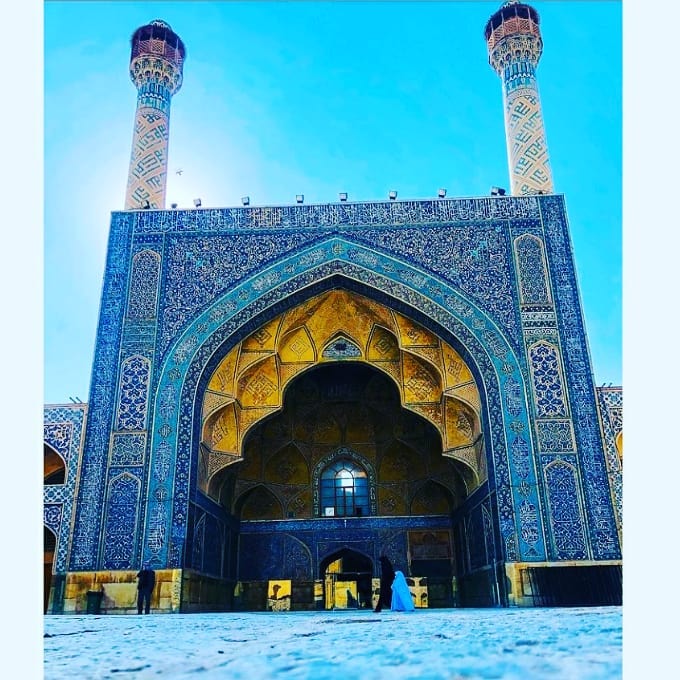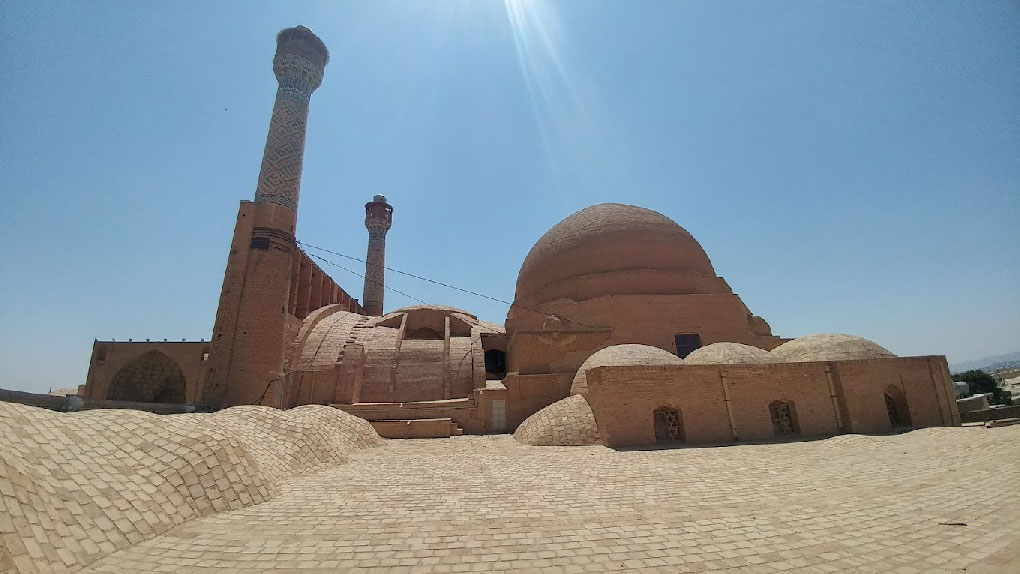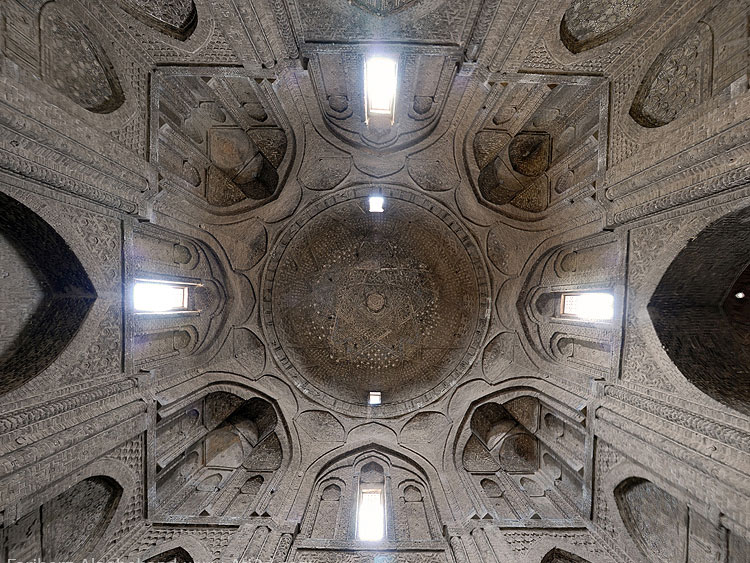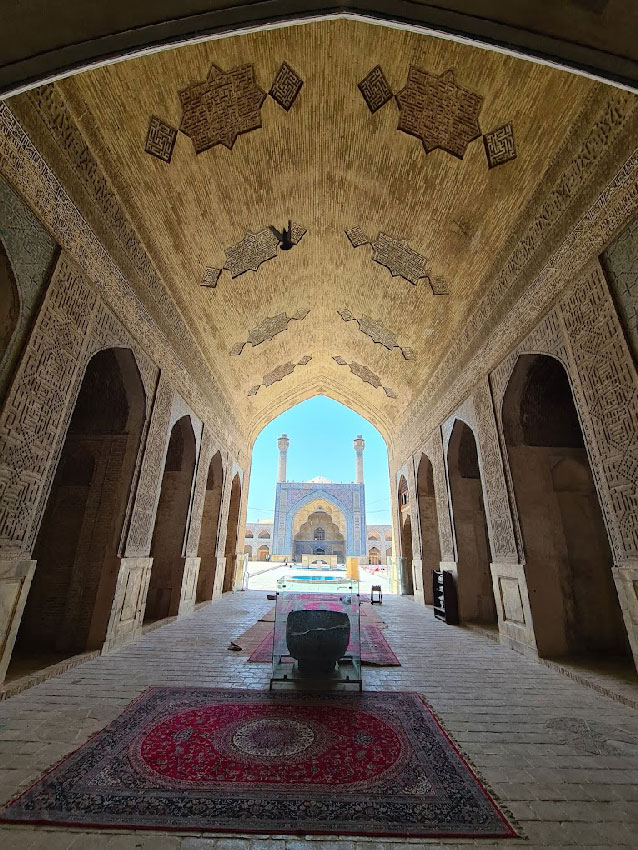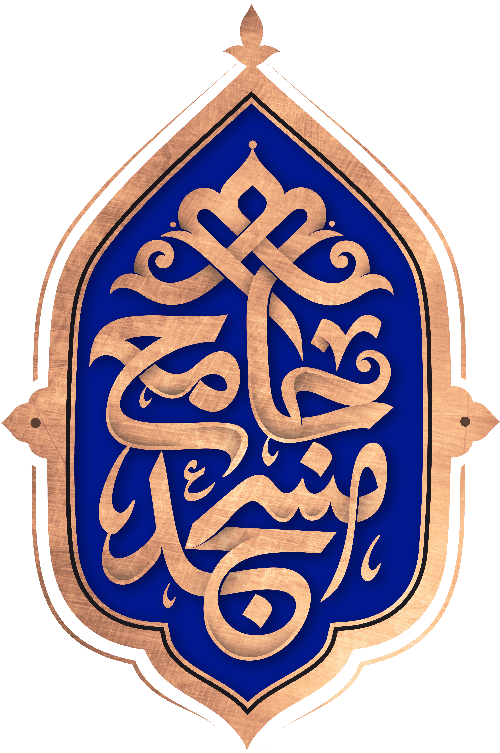In the west of Jame Mosque, there is a porch that is 12 meters long and 12 meters wide. This porch has rocking arches and large moqrans. This porch is also referred to as “Sofe Ostad”. This name corresponds to the time when a master rebuilt this porch using the “Razi style” and her student also built the eastern porch. For this reason, these two porches are known as “Sofa Ostad” and “Shagerd”. During the reign of Shah Sultan Hossein Safavi, the inside and outside of this porch were decorated with designs, lines and inscriptions on tiles. In addition, on top of this porch, a garland for the call to prayer has also been built.
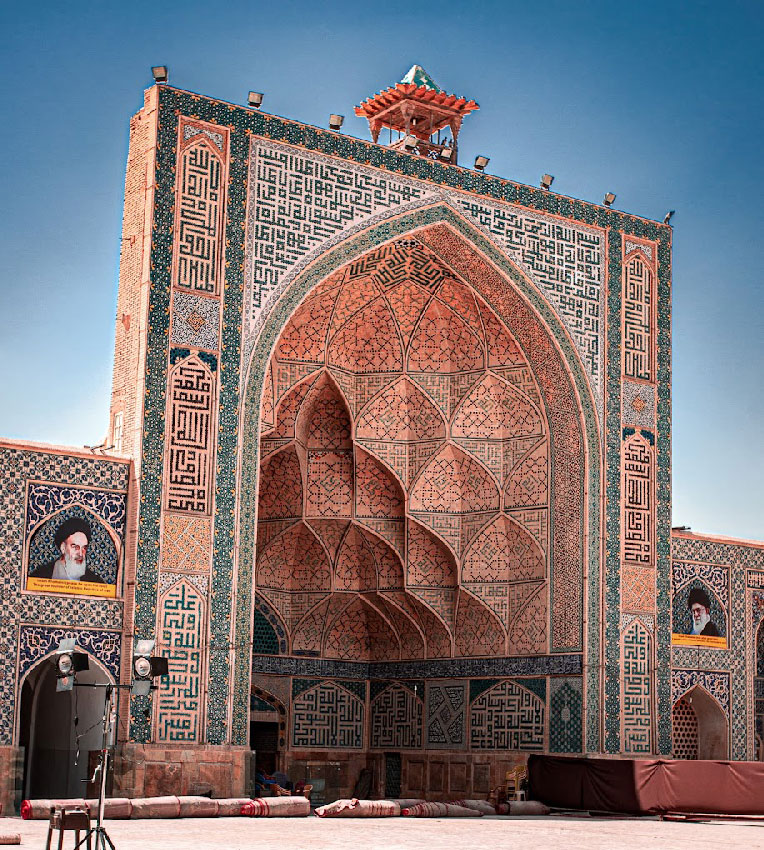
Inscription of Shah Sultan Hossein
In this porch, there is an important inscription named “Shah Sultan Hossein”. This inscription was written in the year 1112 A.H. (12th century AH) by Ali Naqi Emami in thul script on an azure colored clay tile.
In this porch, there is an important panel that bears the name of “Mohammed Amin Isfahani”. This tableau consists of four triangles and one square and has a poem that refers to Muhammad Amin and mentions Ali’s love in it.
| Because our crime letter got confused | They took it and measured it | |
| Most of all, it was our fault | They gave us the love of Ali |
Ivan’s throne
In this porch, there is a throne on the opposite wall. Inside, above and around it, there are inscriptions written in the Tholt script on azure clay tiles. Also, verses from Surah Kahf and Al-Imran are written on the marginal part of the ceiling of Shahneshin.
In this porch, there is a large mesh window made of tiles, and in its outer crescent, Arabic and Persian poems are written in Nastaliq script on azure clay tiles.
Because according to the order of the employer of the world (Ali’s love is paradise)
It became the building of Muslim prostration (divider of Hell and Paradise)
Khosrow during Shah Kivan Gholam (Call for Ali, the Manifestation of Wonders)
The inscription of the altar of the porch
Inside the muqrans of the wall in front of the porch, there are inscriptions on the blue tile in Nastaliq script. Also, in two parts of the mesh window, a poem is written in Nastaliq script on the azure clay tile, which is associated with the name of Mohammad Amin Esfahani, master tiler.
At the beginning of the Hozkhaneh corridor, a stone inscription in Nastaliq script has been installed in 1073 AH (10th century AH), which contains the details of the waqf and the endowment name.
Also, there is a noon hour indicator on the wall with turquoise glazed tiles on the side of the west porch, which shows the time of noon prayer by means of the second shade of the porch.
